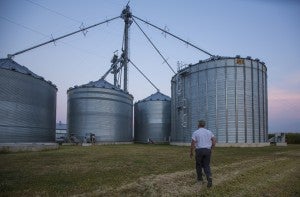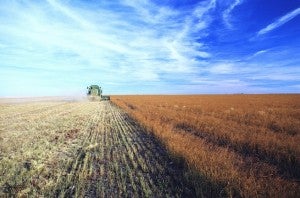 Ten years ago the former CEO of Walmart, Lee Scott, made a speech that included three aspirational environmental goals. One of these goals was “to sell products that sustain our resources and environment.”
Ten years ago the former CEO of Walmart, Lee Scott, made a speech that included three aspirational environmental goals. One of these goals was “to sell products that sustain our resources and environment.”
Yesterday Walmart announced that it will surpass its aggressive goal of reducing 20 million metric tons (MMT) of greenhouse gas (GHG) emissions from its supply chain. In total, Walmart will reduce 28 MMT of GHG from its supply chain by the end of 2015. That’s the equivalent of getting almost six million cars off the road.
To achieve this goal, Walmart tackled a diverse range of projects, including changing food date labeling to reduce waste and working with food companies and EDF to optimize fertilizer use on over 20 million acres of U.S. farmland.
As EDF president Fred Krupp said, “When you can get big companies to do important things, you can change the world.”
That’s why Walmart’s commitments have had a ripple effect with food companies across the country – 15 companies representing 30 percent of the U.S. food and beverage market created fertilizer efficiency plans – and why the retailer is helping make sustainable food production the norm. Walmart and the food companies supplying products to the retailer’s shelves understand that we’re facing environmental challenges that demand market based solutions.
Supply chain analysis highlights fertilizer loss
 Ten years ago, no one knew precisely how Walmart could reduce 20 MMT of greenhouse gases from its supply chain, but when you set audacious goals, innovation tends to follow.
Ten years ago, no one knew precisely how Walmart could reduce 20 MMT of greenhouse gases from its supply chain, but when you set audacious goals, innovation tends to follow.
One key analysis of the company’s supply chain found that a huge source of GHG emissions was from fertilizer runoff on farms. This is problematic for both farmers, who spend up to 50 percent of their input costs on fertilizer, and for the planet, since fertilizer runoff converts to nitrous oxide, a GHG 300 times more powerful than carbon dioxide.
Taking advantage of EDF’s history of working with farmers, we were able to work with stakeholders all along the supply chain – food companies, agricultural retailers, and farmers – to optimize fertilizer use while maintaining crop yields. Now, multiple companies have committed to optimizing fertilizer use on over 20 million acres of U.S. farms, saving farmers money while reducing climate impacts.
It’s an approach to environmental innovation that is a win for sustainability and for profitability.
Measuring sustainability
You can’t manage what you don’t measure. That’s why EDF and Walmart worked together to create a Sustainability Index to accurately quantify and communicate the degree to which any particular product is (or is not) sustainable.
Suppliers were asked a huge range of questions – including how much water and fertilizer were used to grow wheat or corn. The index uses the science and tools developed by The Sustainability Consortium, which now has over 100 global members including companies, universities and nonprofit organizations. At this point, thousands of products have been evaluated and last spring this information became customer-facing for the first time through Sustainability Leaders badges that appear on Walmart.com.
Looking ahead
I recognize that there will always be the challenge of balancing short-term financial pressure against long-term environmental risks. These two challenges will increasingly converge as extreme weather disrupts crop production and as we struggle to provide food to a growing population without wiping out all of our natural reserves.
That’s why we need more food companies to step up and make public, science-based commitments to sustainable agriculture. As we’ve learned through Walmart’s 10-year journey, tending one’s own sustainability garden is necessary but no longer sufficient: corporate leaders of today and tomorrow need to collaborate widely and consistently to leverage their impact at scale. When that happens, both the economy and the planet can thrive.
Related content
Climbing Toward Corporate Sustainability, Even Walmart Can’t Do It Alone
More reasons to embrace food sustainability









